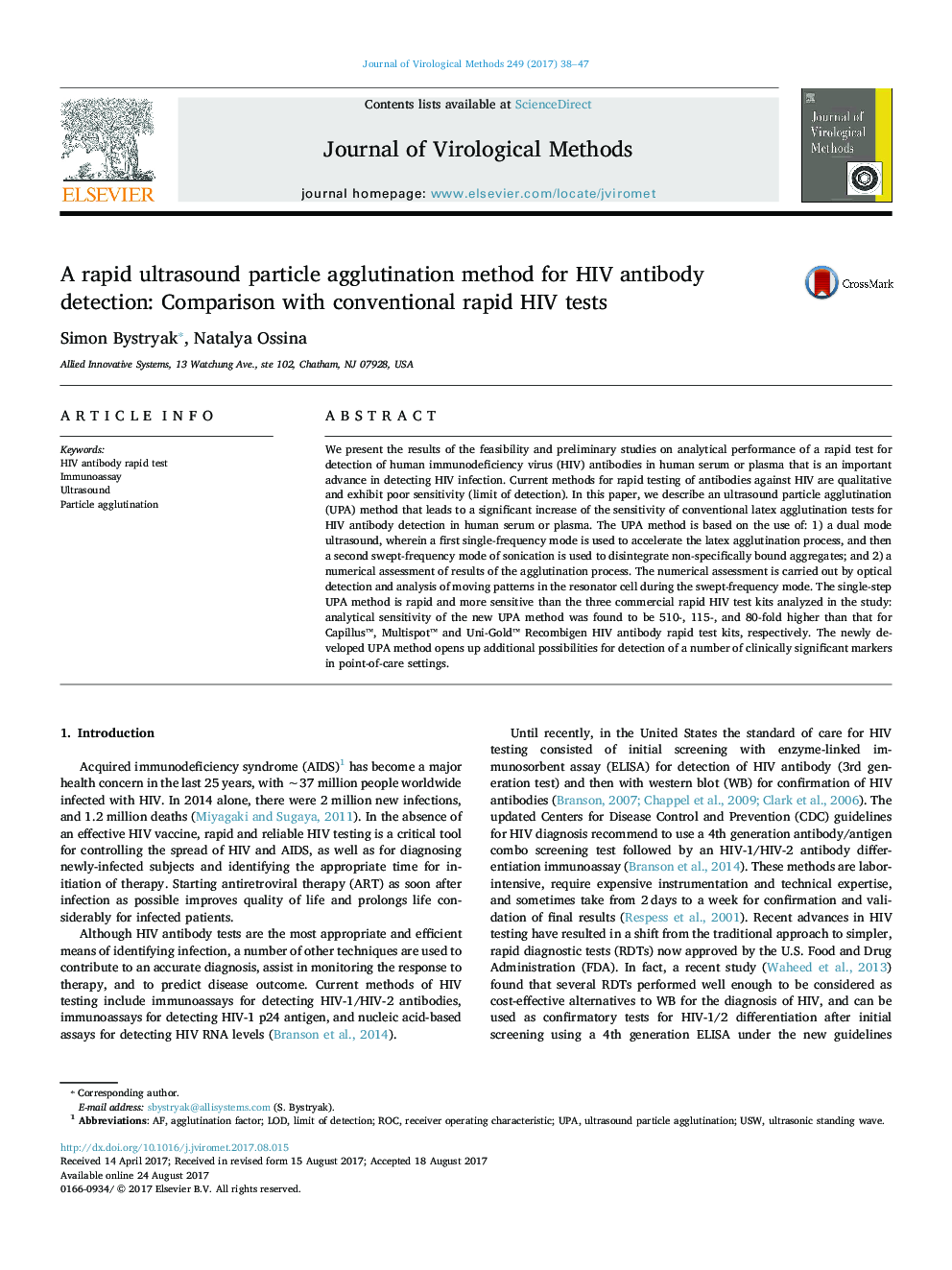| Article ID | Journal | Published Year | Pages | File Type |
|---|---|---|---|---|
| 5672982 | Journal of Virological Methods | 2017 | 10 Pages |
â¢An ultrasound particle agglutination (UPA) method is described.â¢The UPA method uses dual mode ultrasound to reduce non-specific agglutination.â¢The UPA method eliminates manual manipulation of samples.â¢Optical detection allows accurate quantitative assessment of agglutination process.â¢The UPA method is 100-500 times more sensitive than conventional rapid HIV tests.
We present the results of the feasibility and preliminary studies on analytical performance of a rapid test for detection of human immunodeficiency virus (HIV) antibodies in human serum or plasma that is an important advance in detecting HIV infection. Current methods for rapid testing of antibodies against HIV are qualitative and exhibit poor sensitivity (limit of detection). In this paper, we describe an ultrasound particle agglutination (UPA) method that leads to a significant increase of the sensitivity of conventional latex agglutination tests for HIV antibody detection in human serum or plasma. The UPA method is based on the use of: 1) a dual mode ultrasound, wherein a first single-frequency mode is used to accelerate the latex agglutination process, and then a second swept-frequency mode of sonication is used to disintegrate non-specifically bound aggregates; and 2) a numerical assessment of results of the agglutination process. The numerical assessment is carried out by optical detection and analysis of moving patterns in the resonator cell during the swept-frequency mode. The single-step UPA method is rapid and more sensitive than the three commercial rapid HIV test kits analyzed in the study: analytical sensitivity of the new UPA method was found to be 510-, 115-, and 80-fold higher than that for Capillusâ¢, Multispot⢠and Uni-Gold⢠Recombigen HIV antibody rapid test kits, respectively. The newly developed UPA method opens up additional possibilities for detection of a number of clinically significant markers in point-of-care settings.
Graphical abstractDownload high-res image (83KB)Download full-size image
